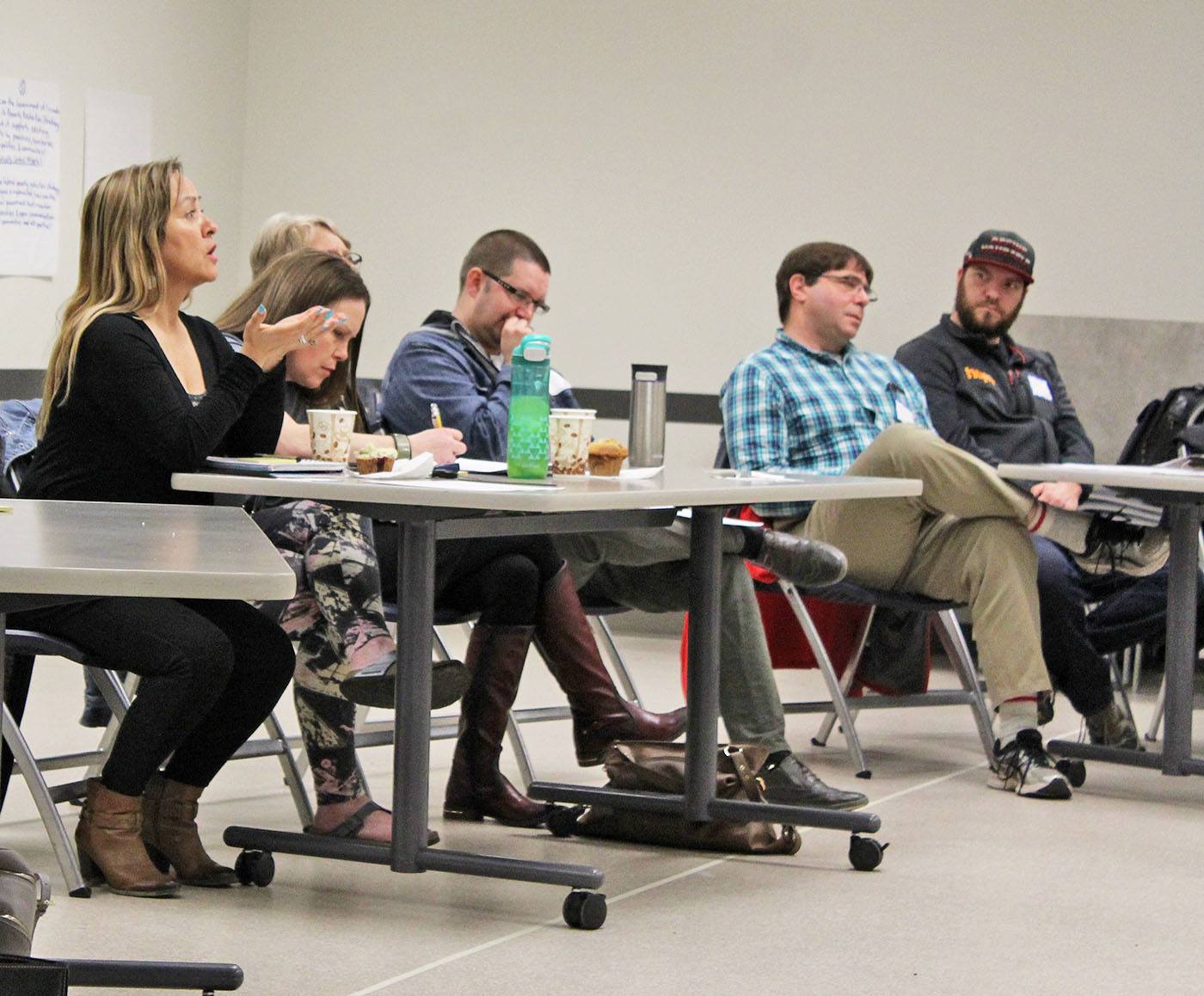Members of the community met in a roundtable discussion earlier this week to discuss poverty reduction strategies, some even sharing their own personal stories.
Putting on the event was the Central Alberta Poverty Reduction Alliance (CAPRA) and took place at the G.H. Dawe Community Centre. The discussion was facilitated by community facilitators of Alberta Health Services, Shelley Dallas- Smith and Harrison Blizzard.
Vibrant Communities Canada and Employment and Social Development Canada partnered together to put out a series of questions for the community to answer. The two groups have been supporting up to 30 cities, and host these local community consultations across the country to gather input to be used to inform the development of the federal poverty reduction strategy.
Discussions captured input from a variety of community members.
The group discussed possible root causes of poverty and what the world would be like if poverty no longer existed. Crime, stress and housing were just some of the factors that would be much improved as a result of poverty reduction, the group heard.
“I’ve kind of looked at what are the root causes of poverty, and what really jumped out at me was the thought of the ability to generate income,” said Monica Morrison, executive director of Golden Circle Senior Resource Centre.
She said people she’s met that could possibly fit in some of the dimensions mentioned at the discussion have suffered a lot of emotional trauma in their lives.
She posed the question – where’s the hope?
“There’s no hope, and I find a lot of times I’ve heard those comments especially from the dimensions of poverty in special groups,” she said.
She said the reality is that a lot of older people live in the poverty area because a lot of women didn’t work when they were younger, therefore don’t have pensions. That of course is changing, as a lot more women are in the workforce and have the ability to build equity, pensions, etc.
Daniel Primeau, community engagement lead for Hope Mission, said the root cause of poverty could have to do with a lack of education through both physical schooling and individual education. He said this could be related to the questions of who am I, where am I going, what’s my purpose?
“That comes along with mentoring as well. We have very little to no mentorship that I have found in society,” he said.
Kimberly Wickens, aboriginal housing coordinator with Red Deer Native Friendship Society also had a lot to say on the issue, sharing her own personal story with poverty.
Coming from poverty herself, Wickens grew up in foster care and her mother was an alcoholic.
“I broke the cycle. It was really hard to break the cycle. I was the first to graduate from my family in the midst of traumatic experiences and then coming from graduating I had to go into debt to get a post secondary, which put me around $11,000 into debt,” said Wickens.
When she did get into her working field she started at minimum wage, and it took her 10 years to start with work experience and her education to finally start making a living wage to try and support her family.
The cost of education, she said, brought her more into poverty just from her wanting to do something better.
Her dream was to become a social worker with a social work degree, but all she could afford was to do a computerized administration degree, which still set her back that $11,000.
Wickens currently works with families who live in poverty everyday and runs the homelessness prevention program at the Native Friendship Centre.
“A single parent with two children on income support receives $564 for core essential and $566 for core shelter, which is $1,130 per month. They need a three bedroom home. Their whole cheque that they’re getting from income support of $1,130 is going straight to rent,” she said, adding that it doesn’t even include utilities.
She said if she had a magic wand and was able to go back in her life she would give herself free education and free daycare for her children to know she wouldn’t have to worry about them while she was in school trying to better herself.
“My whole life was the stress of where’s my next $20 to buy milk for the week going to come from.”
Some of the other questions revolved around indicators used to track progress towards targets, groups to focus efforts on, Government of Canada programs and policies that are effective in reducing poverty and more.
The community’s input will be incorporated into the final report and comments will be compiled to be put into a template and forwarded onto the federal government.
carlie.connolly@reddeerexpress.com



